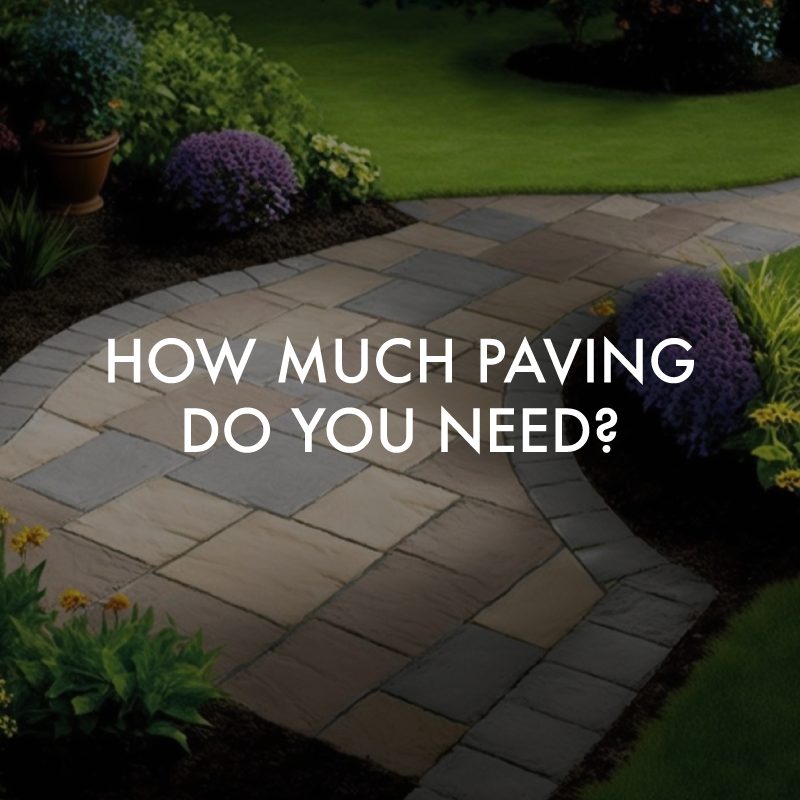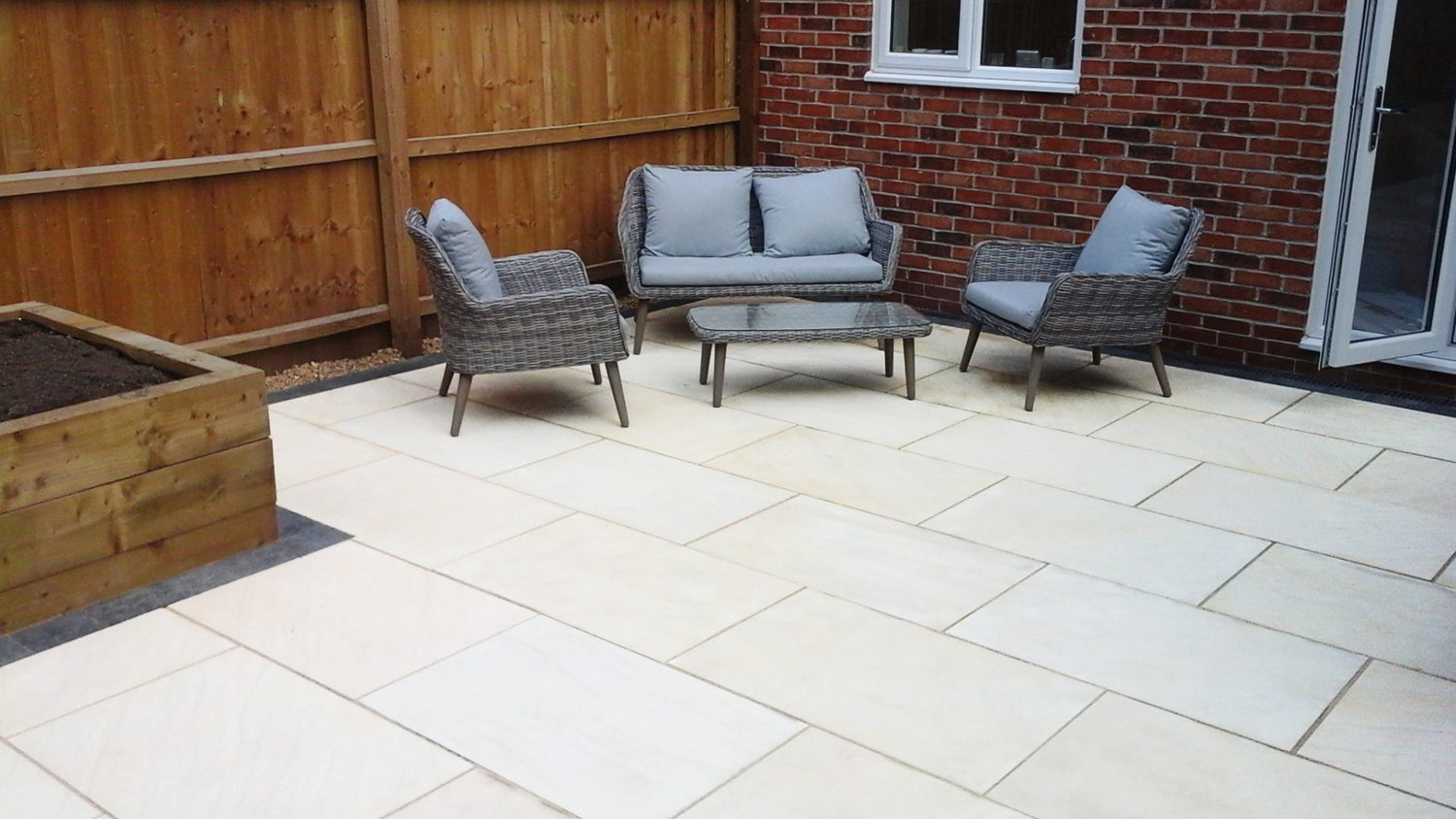
How much paving do you need to cover your outdoor space?
Share
Planning an outdoor paving project is exciting, but it’s crucial to accurately estimate the amount of paving needed before you start. This ensures you avoid under or overestimating, which can lead to unnecessary costs and delays. In this guide, we'll cover everything you need to know about calculating the paving area, including understanding the size of paving slabs, different laying patterns, and how to handle irregular areas.
How to Calculate the Area of Paving
Start by measuring the area you plan to cover. Use a tape measure to determine the length and width of the space. Once you have these dimensions, calculate the total area by multiplying the length by the width.
For instance, if your outdoor space measures 10 meters long and 5 meters wide, the total area would be 50 square meters (10m x 5m = 50m²). This calculation forms the basis for determining how much paving you’ll need.
Factors Affecting the Amount of Paving Needed
Several factors can influence the amount of paving required:
- Paving slab size: The size of the slabs affects how much area each slab covers. Larger slabs cover more ground, reducing the total number of slabs needed.
- Laying pattern: The pattern you choose, such as herringbone or basket weave, can create more waste due to the cuts required, increasing the overall amount of paving.
- Irregular areas: Non-rectangular or oddly shaped areas often require more cuts and, therefore, more slabs, leading to increased wastage.
Calculating the Amount of Paving Required
After measuring the area and considering factors like slab size and laying pattern, you can calculate the number of paving slabs needed using this formula:
Total area to be covered ÷ Paving slab area = Number of paving slabs required
For example, if your area is 50 square meters and you’ve chosen slabs that are 0.5 meters by 0.5 meters (0.25 square meters per slab), you would need:
50m² ÷ 0.25m² = 200 paving slabs
To account for cuts and wastage, it's advisable to add around 10% extra to your total slab count:
200 + 10% = 220 paving slabs
This formula remains effective regardless of slab size. For example, if you opt for Kandla grey paving slabs, each slab covers 0.54m².
Calculating the Amount of Grout Required
In addition to slabs, you’ll need grout to fill the gaps between them. To calculate the amount of grout needed, you first need to know the size of the gaps between your slabs.
A common gap size is around 10mm, but this can vary. Once you’ve determined the gap size, use the following formula:
Total length of gaps between paving slabs ÷ Gap size = Amount of grout required
For example, with 200 paving slabs and 10mm gaps between them, the total length of the gaps would be:
200 slabs x 0.01m = 2 meters
Using the gap size, the amount of grout required would be:
2m ÷ 0.01m = 200 meters of grout
As with paving slabs, it’s wise to add around 10% extra grout to account for wastage:
200m + 10% = 220 meters of grout
Other Factors to Consider
When planning your paving project, consider these additional factors that might affect the amount of paving needed:
- Slopes: Areas with slopes may require more paving slabs and cuts, leading to increased wastage.
- Steps: If your outdoor space includes steps, measure each step's area and add it to your total calculation. Consider the slab size and any cuts required.
- Borders: Creating a border around your paved area will add to your calculations. Measure the length and width of the border and include this in your total area.
Circular Paving
Circular paving kits are an excellent option for creating circular areas in your outdoor space. These kits typically include pre-cut paving slabs that can be arranged in a circular pattern, creating a visually appealing feature in your yard or garden. They're easy to install and require minimal cutting, making them ideal for DIY enthusiasts. Circular paving kits are available in various sizes and materials, allowing you to choose the perfect kit for your project. They’re also a great way to add a unique touch to your outdoor space, suitable for seating areas, fire pits, and more.
Conclusion
Calculating the amount of paving you need for your outdoor project is essential to ensure you have enough materials and avoid wasting time and money. By measuring the area you want to cover and considering factors that can affect the amount of paving needed, you can use the formulas outlined in this guide to determine the number of paving slabs and the amount of grout required. Factoring in other elements such as slopes, steps, and borders will ensure your paving project is accurate, efficient, and cost-effective.
What are the main benefits of using sandstone for patios?
Sandstone provides a natural, attractive look perfect for patios. It's durable and slip-resistant when wet. Colors and textures like smooth sandstone offer design options. Learn why sandstone is ideal for patios.
How do you calculate how much paving is needed for a patio?
Measure the length and width and multiply to get the area in m². Add 10% for wastage. Refer to paving calculators to determine amounts needed. Order a patio pack for convenience.
What are some inexpensive options for patio paving?
Basic concrete pavers offer an affordable patio solution. Or use 600mm slabs for a budget-friendly modular paving. Check out discounted options like end-of-line items. Get tips on low-cost patio ideas.
How do you clean algae and stains from sandstone patio pavers?
Use cleaners made for natural stone like patio cleaners or algae removers. Follow product instructions carefully. Preserve sandstone’s beauty with proper patio maintenance.
What size pavers work best for circle patio kits?
600mm square slabs enable tight curves for circular patios. A 2.4m circle kit uses 600mm pavers. Browse circle paving options to choose the right size and design.
Related Posts
-

Sub Bases For Patios
In this article, we'll explore key questions surrounding the construction and maintenance of patio bases, providing i...
-

Pros and Cons of Sandstone Paving
Pros & Cons of Indian Sandstone Paving Indian sandstone paving is a natural and durable option that adds both bea...
-

Patio Paving Laying Patterns Guide
Paving patterns can transform an ordinary outdoor space into a stunning and eye-catching area that complements your ...
-

How to lay a patio - An expert guide to laying paving slabs and patterns
There are a few things to consider before laying a patio, such as the type of paving stones and the laying pattern. Y...









